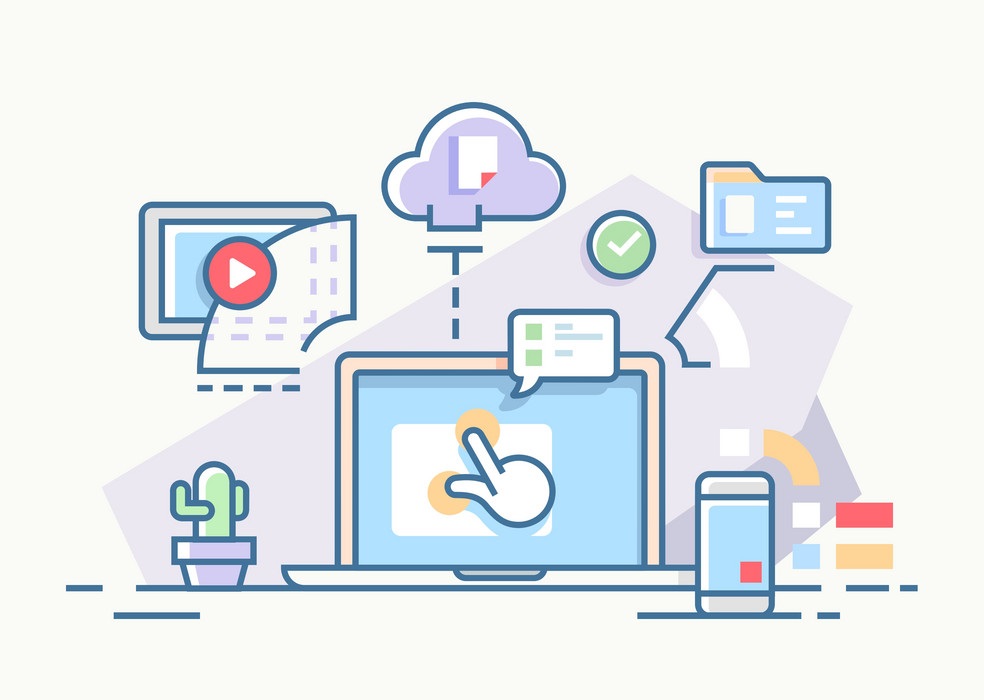No matter how long your sales cycle is, the ultimate goal is always to get the customer to buy your product or service.
Since selling your product to your prospective customer is the goal from the get-go, it only makes sense to start things off by focusing on the product or service in question…right?
Enter the sell sheet.
What is a Sell Sheet?
A sell sheet (also known as a product sell sheet or a one-sheet) is a concise, typically one-page document that showcases the core features, functions, and overall value of a given product or service — and invites the reader to engage further with your sales team.
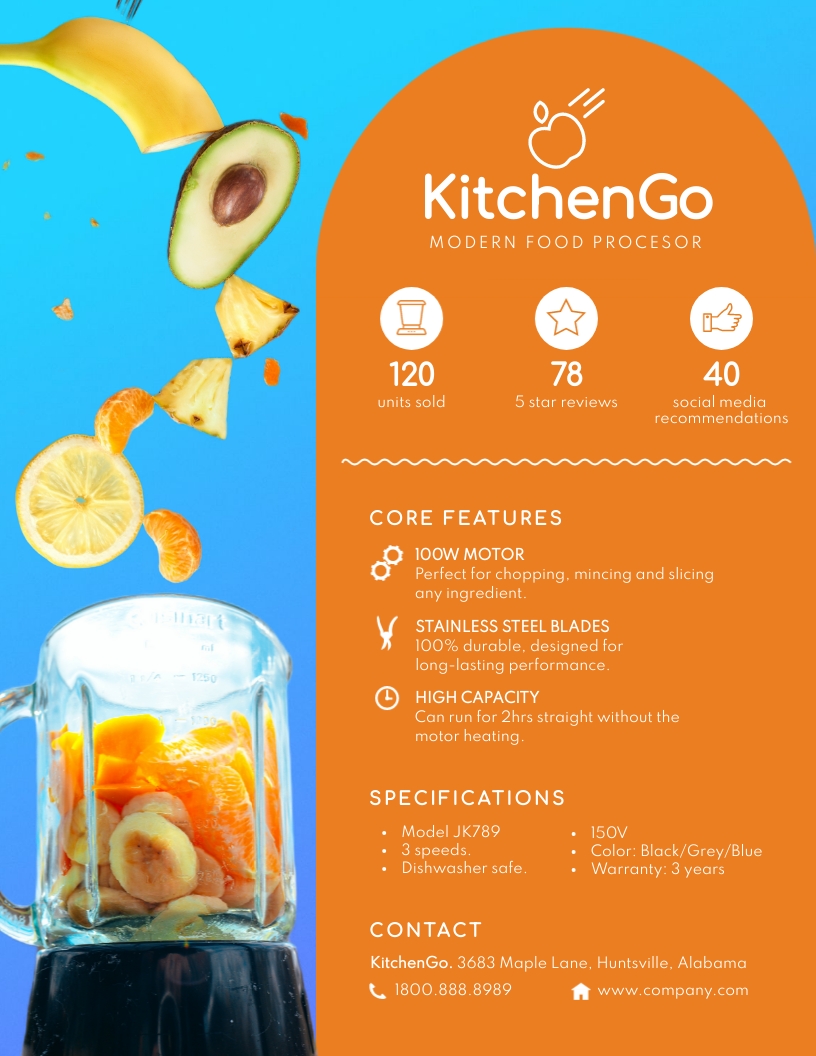
From the buyer’s perspective, product sell sheets explain what the product is and does — and why the customer should care.
Sell sheets are popular sales enablement material that can be used to introduce prospective customers to the product or service in question (and sometimes to your brand as a whole). As such, they’re one of the first pieces of content a customer engages with at the start of a sales cycle.
That said, they aren’t only relevant during the initial stages of the sales process.
Your potential buyers can easily distribute your one-sheet to other stakeholders and team members as needed. This keeps your target customers’ teams aligned and informed — and keeps your product top-of-mind throughout their organization.
Your sales team can then use the given product sell sheet to orient the prospect and get them headed toward conversion. Rather than starting from scratch, you can use the sell sheet as a basis for digging deeper into the prospect’s issues, and ultimately delivering the best solution for their situation.
Core Elements of Effective Sell Sheets
While product sell sheets can take on a variety of forms and appearances, the most effective ones include a healthy balance of the following elements.
Product Information and Relevant Data
A one-sheet will, of course, include information about the product or service being featured.

This information might include:
- Product or service features — and connected benefits
- Product specifications and service policies
- Product reviews, customer quotes, and other forms of social proof
…and any other relevant information that will get the audience interested in your solution and primed for conversion.
Branded Design
Product sell sheets are fully branded from top to bottom to maximize recognizability and recall — and to create an aesthetically-pleasing experience to the customer.
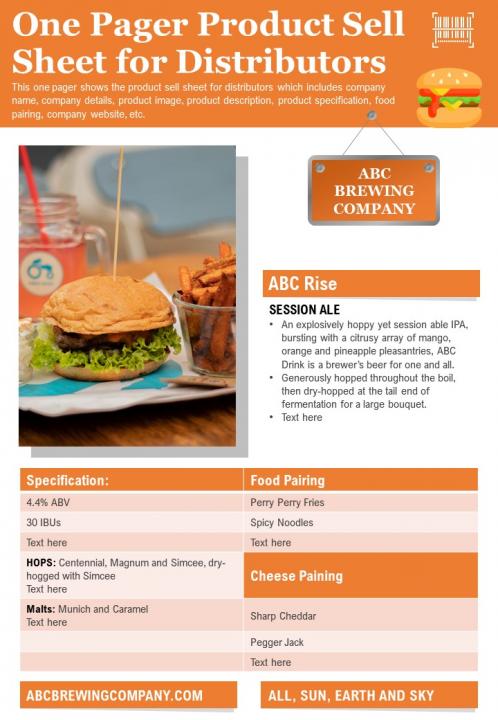
Custom logos, product imagery, color schemes, and font specifications should all be intentionally chosen when putting together a sell sheet. The creative use of whitespace is also important to either call attention to specific information or to round out a cohesively branded document.
Engaging Copy
Speaking of priming prospects for conversion, product sell sheets also include copy that speaks to the buyer while also showcasing your brand’s value.
A strong sell sheet will include a combination of the following elements of engaging copy:
- A heading focused on the main benefit of the product (i.e., the solution it brings to the buyer)
- Subheads to introduce key product features and functions, along with benefits
- Summaries of the features should be
- presented as bullet points or in paragraph format
- Text boxes within images showcasing numerical data, customer quotes, and other “pop-out” info

Helpful Visuals
Visual imagery is a major component of an effective sell sheet.
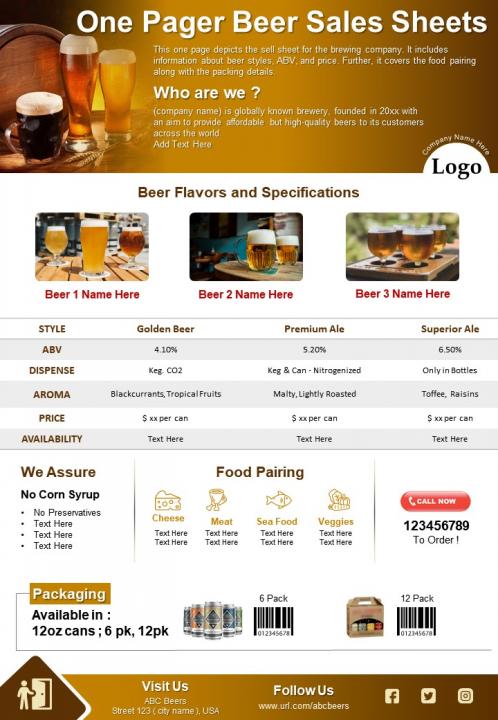
It’s a sell sheet’s eye-catching, detailed imagery that grabs prospects’ attention before anything else — and that gets them to take a closer look at the rest of the document.
Depending on the situation, this imagery may include:
- Detailed, sometimes zoomed-in product photographs
- Charts, graphs, and other visual data
- Action shots of an individual using the product
As shown above, a healthy mix of each makes for a comprehensive and helpful buying guide for prospective customers.
A Practical Call-to-Action
All product sell sheets should include a strong call-to-action — and a clear way to actually take this action.
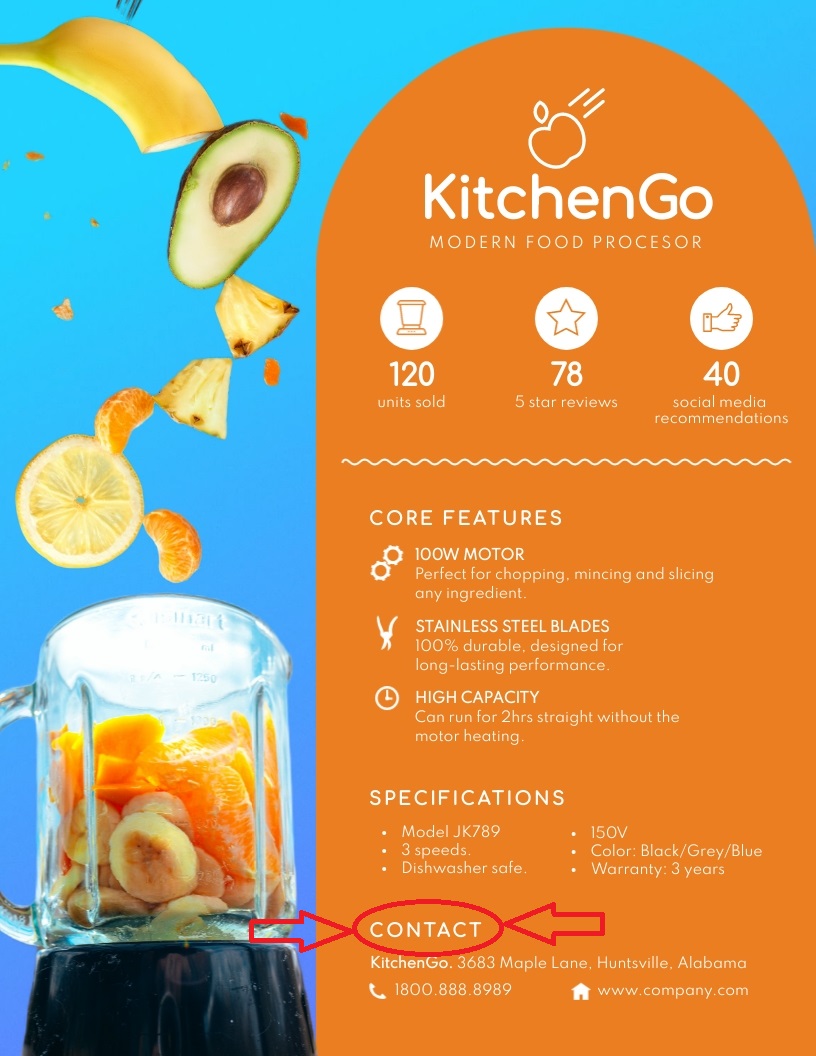
Generally speaking, the CTA should not be the most prominent part of the document. Rather, prospects should naturally be drawn to it once they’ve digested the rest of the information on the sell sheet.
To make this happen, a strong CTA is one that fits into the rest of the product sell sheet — but that stands out just enough to get the reader to take the next step toward making a purchase.
Best Practices for Creating an Effective Product Sell Sheet
Needless to say, you can’t just slap some pictures and a few details of your product on a canvas and think this “product sell sheet” is going to get the job done.
(In most cases, it’ll just go unnoticed by your target audience. In worst-case scenarios, a poorly-designed sell sheet can actually damage your brand’s reputation.)
So, before you create your next product sell sheet, ensure you’re adhering to the following best practices.
Always Keep Both Goals in Mind
To reiterate, a product sell sheet has two main purposes:
- To attract potential buyers to a specific product
- To get them to take further action toward purchasing said product
Accomplishing the first without the second is meaningless; the second without the first, impossible. Unfortunately, it’s far too easy to end up focusing too heavily on one side or the other — which can ultimately render your product sell sheet useless.
(On one side, you’d have a highly-informational document that doesn’t lead to sales. On the other, an overly-promotional document that…doesn’t lead to sales. And if a sell sheet isn’t helping you sell, well…)
The point is, that finding a balance between both goals is crucial when creating a product sell sheet. With a more balanced approach, you’ll be able to use all core elements of your sell sheet to accomplish both goals for the initiative.
Define Your Audience Clearly
If you’ve noticed, we’ve avoided using the phrase “user” as a synonym for “buyer” and “customer” in this article.
And with good reason:
When it comes to product sell sheets, your audience is always the buyer, regardless of whether or not they’re the end-user.
In some cases — typically in the B2C realm — the customer and end-user are one and the same.

This makes the process of nailing down your target audience pretty straightforward.
For B2B providers, though, your target audience is likely not the end-user, but rather a decision-maker within a client’s organization. So, your product sell sheet will need to communicate the value of your product to this decision-maker.
For example, this sell sheet from 6sense is targeted toward marketing and sales teams looking to improve revenue projections for future initiatives.
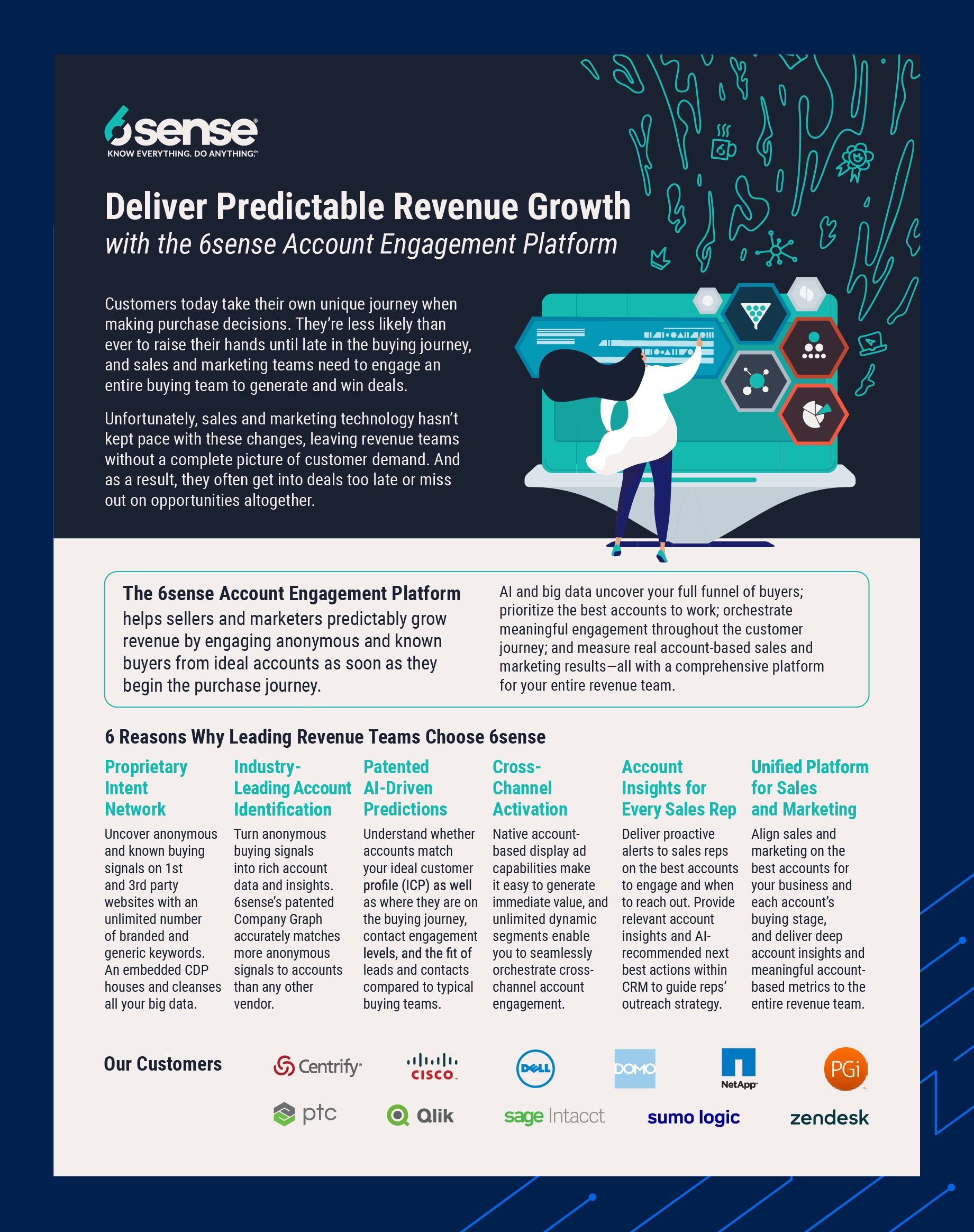
If this page was targeted toward executives, for example, it would be less focused on how the solution works — and more on the impact it’ll have on team productivity and the company’s bottom line.
(Keep this in mind; we’ll come back to it soon.)
You aren’t looking to explain to your audience why “someone” would buy your product.
You’re looking to explain why they should buy it and/or advocate for their company to purchase it.
To this end, defining a specific audience for your product sell sheets will all but ensure they attract the right buyers, for the right reasons.
Prioritize and Organize Your Product Info
Chances are, there’s a lot you can say about your product.
But you can’t use a single product sell sheet to say it all. Instead, it’s better to focus on the most important features and benefits of the product in question.
(And, remember: These items may differ depending on your audience — even when promoting the same product.)
Prioritizing this information requires considering:
- What problems the buyer cares most about solving
- Which features are most relevant to this problem
- Which benefits impact the buyer most
Once you know what information you’ll be including in your product sell sheet, you’ll need to organize it strategically to maximize engagement and conversions.
First, you need to frontload the overall value of your product for maximum visibility.

You then want your reader to “flow” through the document uninterrupted, and be completely prepared for the next steps once they reach your CTA. This is done in a pretty straightforward way in the above example, with subheads and accompanying summaries for the features presented — all leading to a clear call-to-action for the customer.
The following mockup gives an even more succinct overview of a phony product.
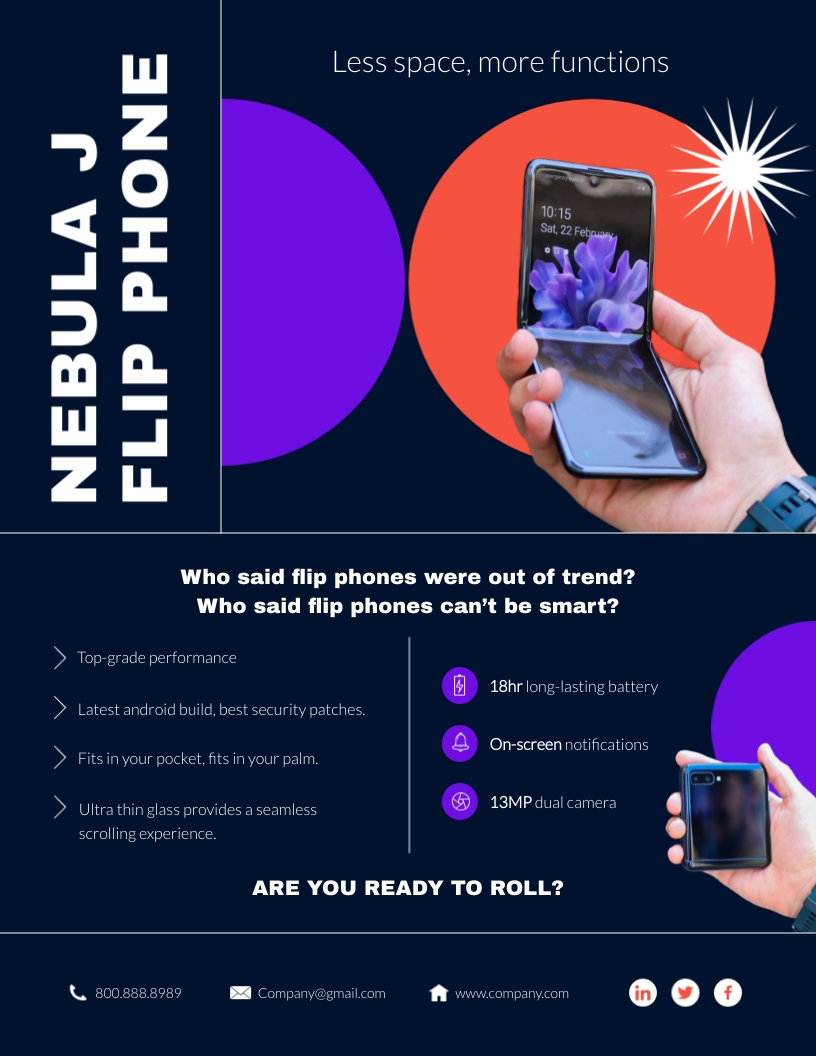
Here, buyers get a quick-hitting list of product features and specs — and can easily get in touch with the company in multiple ways for more info.
Showcase (and Strengthen) Your Branding
As we said earlier, your product sell sheets should be fully branded — in multiple ways.
In terms of design, every inch of the document should be customized in some way. Even when whitespace is used, it should be an intentional decision — not simply because there’s nothing to fill the space with.
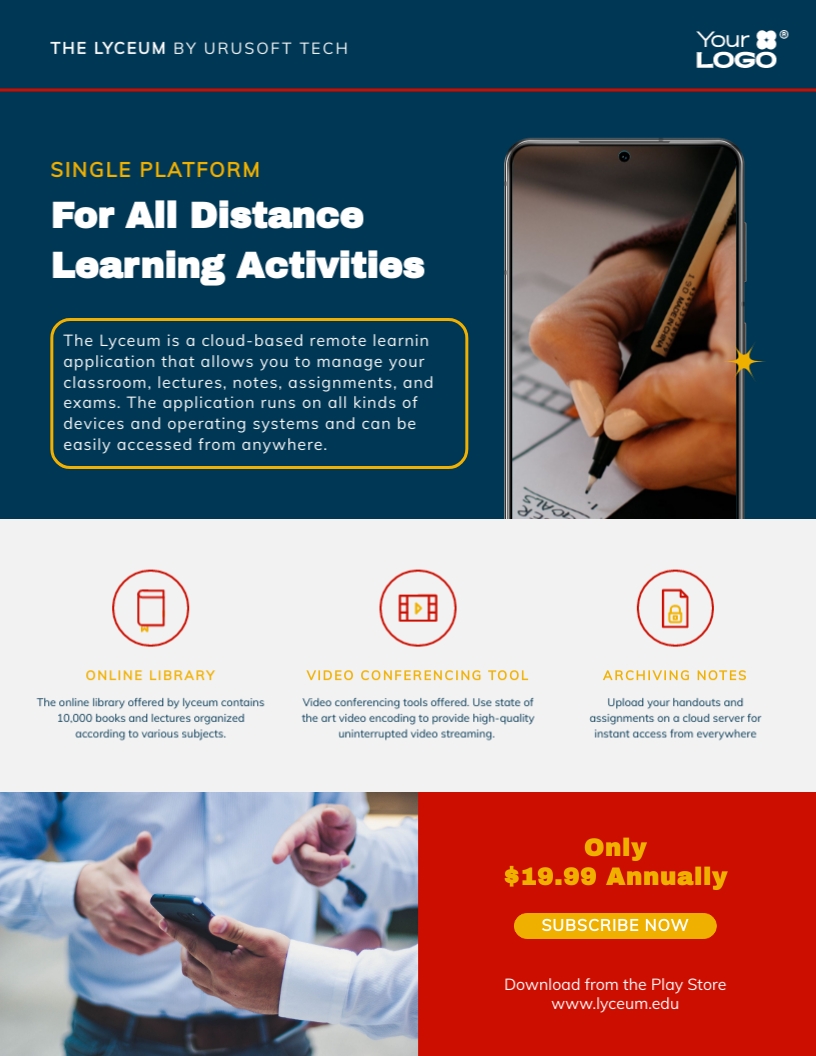
Your product sell sheet should also communicate your brand’s mission, vision, and values clearly — but without explicitly stating them. This comes from the language you use, the images you include, and the overall “feel” you present within the document.

In an immediate sense, your fully-branded sell sheets will help paint your product and company in the best light possible. In doing so, it’ll plant the seed that will lead to a stronger brand recall for your prospects over time.
Enable Your Prospective Customers
We’ve said it before, and we’ll say it again:
Your product sell sheets are worthless if they don’t prompt your customers to take action.
More than just prompting them, though, make it as easy as possible for them to take the next steps with your brand.
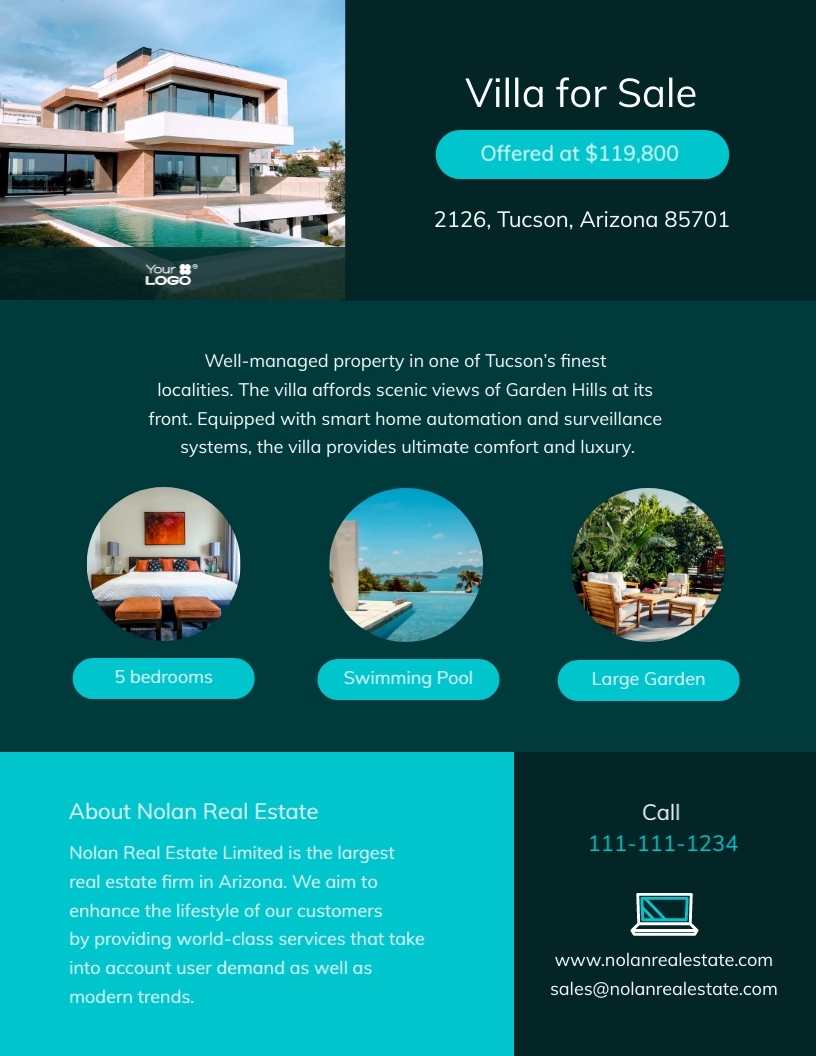
The above one-pager makes it crystal clear how potential buyers can get more information or begin the purchasing process. Ideally, digital versions of this and similar sell sheets would include clickable links to expedite the process further.
Backing up a bit, it’s critical that the rest of your sell sheet’s content prepare your audience to take the next steps in the first place. Here, keeping them prepared means keeping them informed.
(Again, they won’t engage with your CTA if you haven’t informed them of why they should do so.)
Enable your prospects from the start, and they’ll have every reason to stay on the path to conversion.
Distribute Your Product Sell Sheets Strategically
As with all marketing and sales efforts, your sell sheets will only be effective if you get them in front of the right people, in the right place, at the right time.
(And by “right time”, we mean when they’re looking to do business with brands like yours.)
Traditionally, sell sheets are distributed by hand at events, conferences, or trade shows featuring your brand and your products. With live events ramping back up, this tried-and-true option will be back on the menu for sales teams in many industries.
Direct mail is another traditional distribution method that can still be useful in certain cases. Nowadays, you’ll typically see teams use direct mail for localized targeting, or when targeting specific companies or industries.
Shifting to digital distribution, email allows you to cast a much larger net while still staying focused on a specific type of customer. Whether targeting a segment of your current audience or reaching out to potential clients, email allows you to spark one-to-one conversations revolving around your sell sheet and product.

Social media and other online forums present opportunities to distribute your sell sheets, too. In fact, small companies sometimes use these forums to test their promotional materials — which allows them to promote their brand to a targeted audience, as well.

(Note: Be sure to follow the platform’s terms of service when promoting your products on third-party channels.)
In any case, the point is to approach the distribution of your sell sheets as strategically as you approached their creation. Without this step, even the most engaging sell sheet will fall on deaf ears.
Repurpose and Build On Your Product Sell Sheets
Your sales team must be prepared to follow up with those who reach out after engaging with your product sell sheet.
The best way to do this:
Use the sell sheet as a springboard for further discussion.
In general conversations with prospects, expand on the information presented in the sell sheet. Take the time to answer questions, clarify data points, and otherwise create alignment with the prospect.
You can also direct individuals to additional content like blog posts, white papers, and case studies to help them learn more. If you don’t have this content already: Create it now! Expand on the specific points made in your sell sheet — and showcase how your product is the best product for the situation at hand.

Looking at all this another way, make sure that your product sell sheets fit into your overall content strategy instead of existing in a vacuum. That way, you can create a continuous content journey for your customers starting from the first moment they engage with your brand.
Using Helpjuice to Manage Your Product Sell Sheets
Even if you only sell one product, you’ll eventually create multiple sell sheets to promote it to your various audiences.
And, even if you only have one product sell sheet at the moment, you’ll likely make ongoing improvements to the document as you find out what works (and what doesn’t) to pique your intended targets’ interest.
As your document library grows, keeping it organized will prove vital to your team’s productivity.
For one, your sales team will need to be able to access these documents to deliver key information to prospects in real-time. And, as you aim to improve your existing content and create new over time, you’ll similarly want your product sell sheets to be readily available to your team members.
This is where Helpjuice’s knowledge base software comes in.
With Helpjuice, your team can easily store, retrieve, edit, and improve product sell sheets and other documentation as needed. From customer-facing content to internal documentation, Helpjuice keeps your files and information organized, safe, and secure at all times.
Want to learn more? Schedule a free demo of Helpjuice today!



